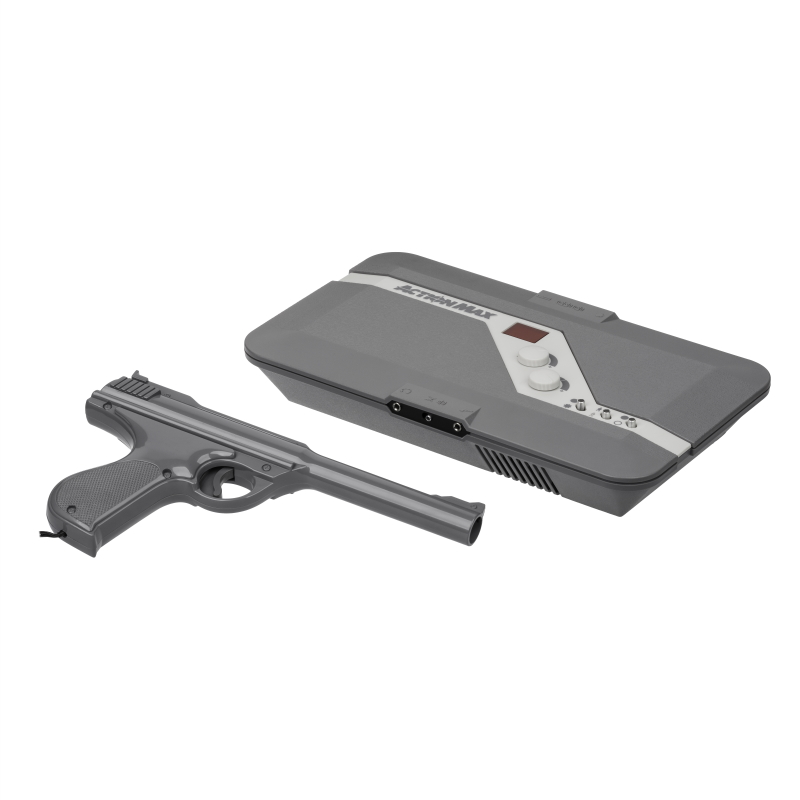|
History
In 1983, Donald Kingsborough, owner of DK Marketing, sold its company to Atari and then joined Atari as president of the consumer products division at Atari Corporation. At his point the company was in a free fall. This was the beginning of the video game crash of 1983/1984. Atari was dumping inventory to raise cash and retailers were massively returning unsold game cartridges. Kingsborough was there to clean Atari’s game, but a year later Atari was sold to Jack Tramiel. Kingsborough left Atari. In early 1985 a California company whose founder helped design the large animated robots at Disneyland came to Kingsborough with an idea for a toy-sized version called Teddy Ruxpin. Kingsborough immediately understood the potential and signed a licensing agreement to produce the toy. Kingsborough incorporated Worlds of Wonder and started to work on making Teddy Ruxpin a reality. Kingsborough called a lot of its contact within Atari to join him into his new adventure. Teddy was a huge success and set the tone for the years to come. Kingsborough didn’t want to be a normal toy company. He wanted to create high-end toy that provided innovative functionalities.
In 1986, wanted to repeat this success story and released Laser Tag and the Pamela: The Living Doll. Both toys were planned for a Christmas release, but there Hong Kong supplier failed to deliver the new toy lines in time. The Pamela doll hit the shelves very late in the Christmas shopping season, but it was simply a flop. The Laser Tag game had some potential, but many shipments didn’t arrive until after Christmas, and retailers were left with unsold gun sets.
By 1987, things were gloomy for Worlds of Wonder and they needed a new hit fast. Enter: The Action Max.
Release
The action max was a VHS-based system, meaning that it required a VCR to be able to play. The premise was simple, VHS tape are used to play a short movie. Whenever something targetable would come up on the screen, a sensor attached to the television screen would flash red rapidly. At the same time, enemy targets are highlighted on the screen by rapidly flashing panels for the player to shoot at, while friendly didn’t. The console would then be able to detect if the player shoot at an enemy by detecting both the flashes from the television and the sensor or at the friendly target if only the sensor was detected, thus gaining or losing points.
This technology, already developed for the Laser tag game, kept the price of the console relativity cheap, but the used of VHS limited the replay value. Still, as the console was not tryin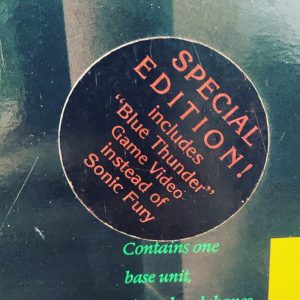 g to compete against giants like the Nintendo Entertainment System, Worlds of Wonder was confident that the Action Max could become the success they were looking for. In a short period of time, 5 games were released with a sixth one, Fright Night, was announced.
g to compete against giants like the Nintendo Entertainment System, Worlds of Wonder was confident that the Action Max could become the success they were looking for. In a short period of time, 5 games were released with a sixth one, Fright Night, was announced.
Demise
By September 1987 was already in financial trouble with nearly 240 million in debt. By December 1987, the fired nearly half of the workforce and reduced the price on many of their toys including the Action Max. By 1988, the company filed for bankruptcy protection and was liquidated in 1988. The creditors continued to operate the company in receivership until finally closing its doors in late 1990. This period of operation only involved selling off existing inventory and no new toys were developed or manufactured.
A special edition of the console including Blue Thunder instead of Sonic Fury was also available for a short period of time before the console end of life.
Games
Only 5 games were ever released for the console. A sixth game called Fright Night was planned but never released.
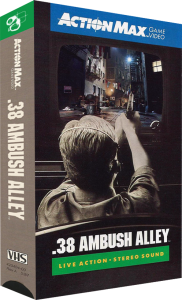 | 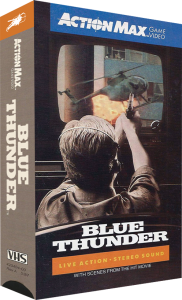 | 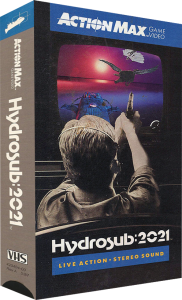 | |||
| .38 Ambush Alley | Blue Thunder | Hydrosub: 2021 | |||
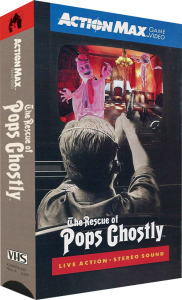 | 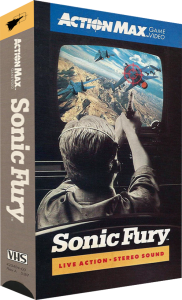 | ||||
| The Rescue of Pops Ghostly | Sonic Fury | ||||
Action Max Commercial

